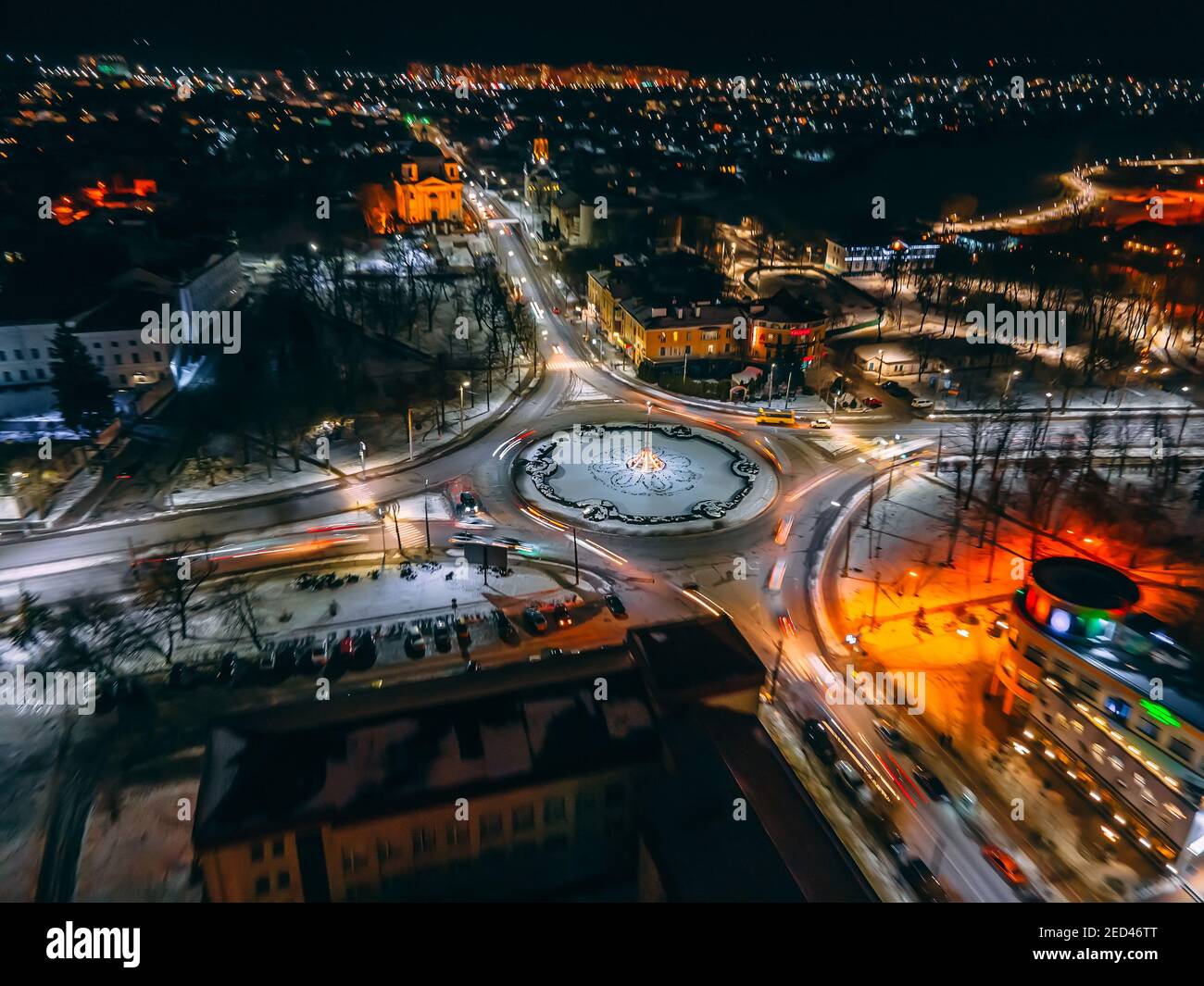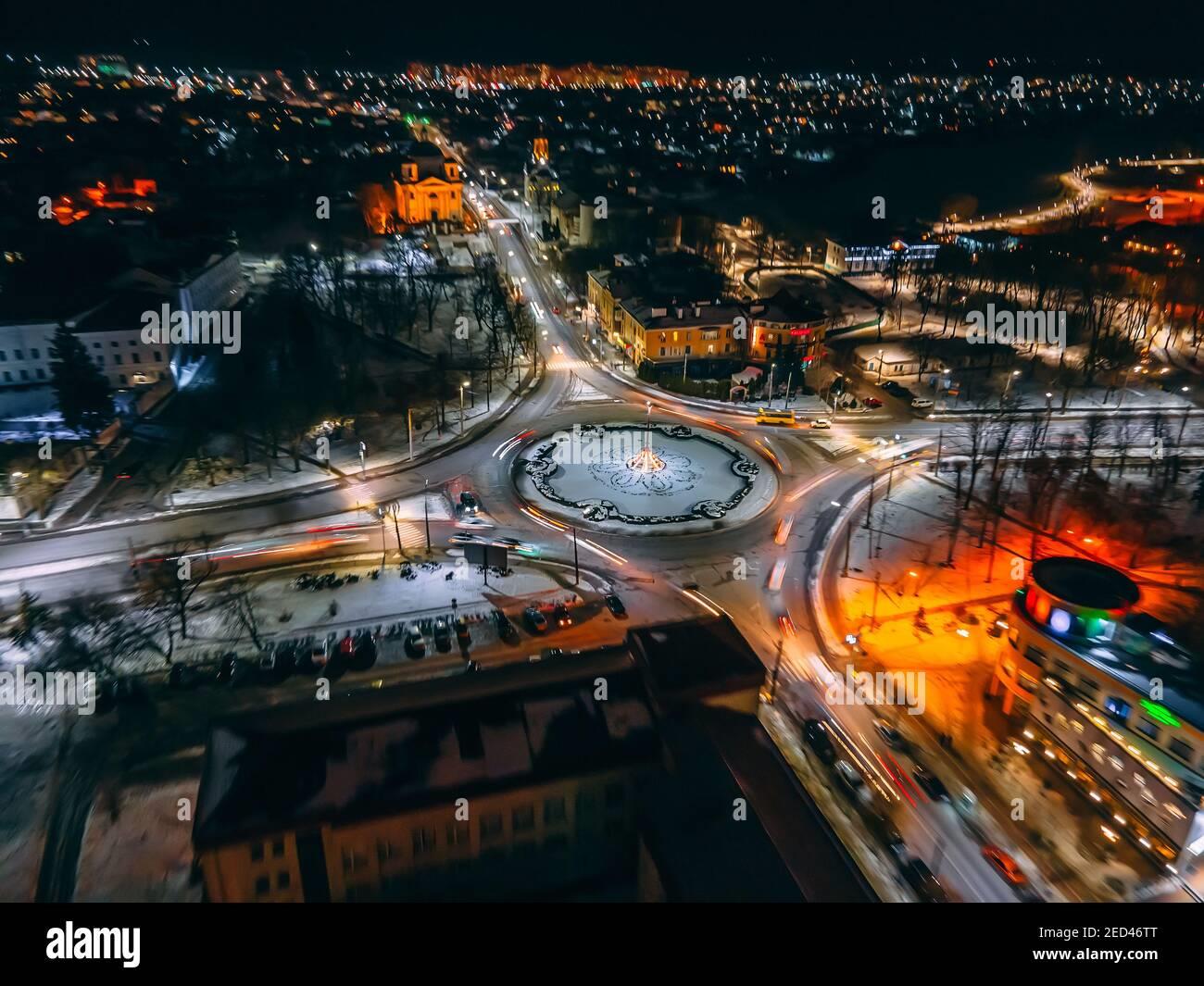
Nightlong Barrage Batters Kyiv And Wider Ukraine

Air raid sirens blared across Ukraine before dawn on 28 September as waves of Russian drones and missiles struck Kyiv and multiple regions, leaving fatalities and dozens of injuries while the assault continued into the morning, according to officials.
Authorities in the capital reported deaths and widespread damage across more than 20 sites, including homes, a medical facility and a kindergarten; emergency services worked through debris as thick smoke drifted near the city centre. Early casualty tallies diverged as updates came in: Kyiv's toll rose to at least four dead, including a 12-year-old girl, and at least 10 injured, with national figures indicating additional wounded outside the capital.
Ukrainian officials described the attack as involving“hundreds” of missiles and drones, triggering hours of air-defence fire and underground sheltering across the country. The strikes were still under way around 09:15 local time, with explosions and interceptor activity recorded over Kyiv as residents crowded into metro stations.
Kyiv endures a nightlong barrage across wider Ukraine. City authorities said a cardiological hospital was hit by debris and several districts suffered blast damage, while responders evacuated residents from shattered apartment blocks. In Zaporizhzhia, a missile struck a high-rise, injuring at least 16 people, including three children, and igniting fires that spread through several floors.
Neighbouring Poland temporarily closed airspace in the southeast and scrambled jets as the cross-border threat picture grew less predictable during the overnight waves. Warsaw framed the move as a precaution aligned with national and NATO air policing procedures, reflecting concerns that drone or missile fragments could stray near its frontier.
See also Blizzard Strands Hundreds in Tibet on Everest SlopesUkraine's air force tracked successive launches from Russian territory and the Black Sea area, with officials noting the use of heavy bombers alongside Shahed-type drones that targeted energy and urban infrastructure. Local administrations around Kyiv reported blazes and damage to residential areas as air defences attempted to thin the incoming salvos.
Sunday's bombardment followed a pattern of stepped-up long-range strikes this month. On 20 September, Russia unleashed a nationwide barrage that killed at least three people and wounded dozens, part of a renewed campaign probing gaps in air defence coverage before the colder months. Energy facilities have repeatedly been singled out, with Ukraine's grid operators warning of sustained pressure ahead of winter.
Those fears were amplified this week by disruptions around the Zaporizhzhia nuclear power plant, where damage to transmission lines forced the facility to rely on emergency systems, underscoring the vulnerability of critical infrastructure when large-scale strikes degrade the grid. Kyiv's energy ministry has cautioned that repairs to generating capacity and networks are racing against time as strikes continue.
Diplomatic and security responses unfolded alongside the military emergency. Kyiv's leadership pressed partners for additional air-defence assets and ammunition, arguing that the latest waves illustrate the scale of resources needed to protect major cities. The assault coincided with indications from President Volodymyr Zelenskyy that negotiations on expanded defence support are advancing, including air-defence systems and drones.
On the ground, the immediate focus remained rescue and stabilisation. Fire crews and medics moved between impact sites as transport hubs coped with surges of sheltering passengers. Urban services cordoned off damaged streets and warned residents to heed follow-on alerts amid concerns that delayed-fuse munitions and falling debris could extend the hazard period through daylight hours. Kyiv's military administration urged people to stay in protected areas until the all-clear, noting that interception successes can still send shrapnel across wide swathes of the city.
See also Engineer Cites Ethical Crisis at Tesla, Quits Over LeadershipMilitary analysts said the sequencing of drones and missiles-often mixing decoys with cruise and ballistic systems-aims to saturate defences and force difficult choices about interceptor allocation. The use of heavy bombers adds standoff capacity, complicating air-defence planning for Ukraine's commanders. Sunday's pressure on Kyiv, paired with strikes on southern and central regions such as Zaporizhzhia, suggested a strategy of stretching defenders and testing urban resilience as winter nears.
The damage survey is expected to take days, with structural engineers assessing apartment blocks, schools and medical facilities while utilities crews work to restore gas, water and electricity where lines were severed. Energy companies have warned that repeated hits, even when partially intercepted, can degrade substations and distribution nodes, compounding repair timelines and raising the risk of rolling outages under peak demand. Local authorities in several oblasts reported fires, shattered windows and cratered courtyards typical of Shahed impacts and cruise-missile blast waves.
Notice an issue? Arabian Post strives to deliver the most accurate and reliable information to its readers. If you believe you have identified an error or inconsistency in this article, please don't hesitate to contact our editorial team at editor[at]thearabianpost[dot]com . We are committed to promptly addressing any concerns and ensuring the highest level of journalistic integrity.
Legal Disclaimer:
MENAFN provides the
information “as is” without warranty of any kind. We do not accept
any responsibility or liability for the accuracy, content, images,
videos, licenses, completeness, legality, or reliability of the information
contained in this article. If you have any complaints or copyright
issues related to this article, kindly contact the provider above.
Most popular stories
Market Research

- Pepeto Highlights $6.8M Presale Amid Ethereum's Price Moves And Opportunities
- Codego Launches Whitelabel Devices Bringing Tokens Into Daily Life
- Zeni.Ai Launches First AI-Powered Rewards Business Debit Card
- LYS Labs Moves Beyond Data And Aims To Become The Operating System For Automated Global Finance
- Whale.Io Launches Battlepass Season 3, Featuring $77,000 In Crypto Casino Rewards
- Ceffu Secures Full VASP Operating License From Dubai's VARA



















Comments
No comment